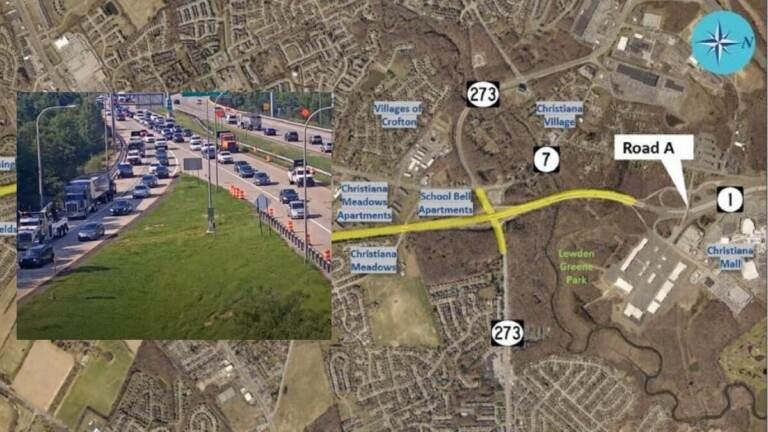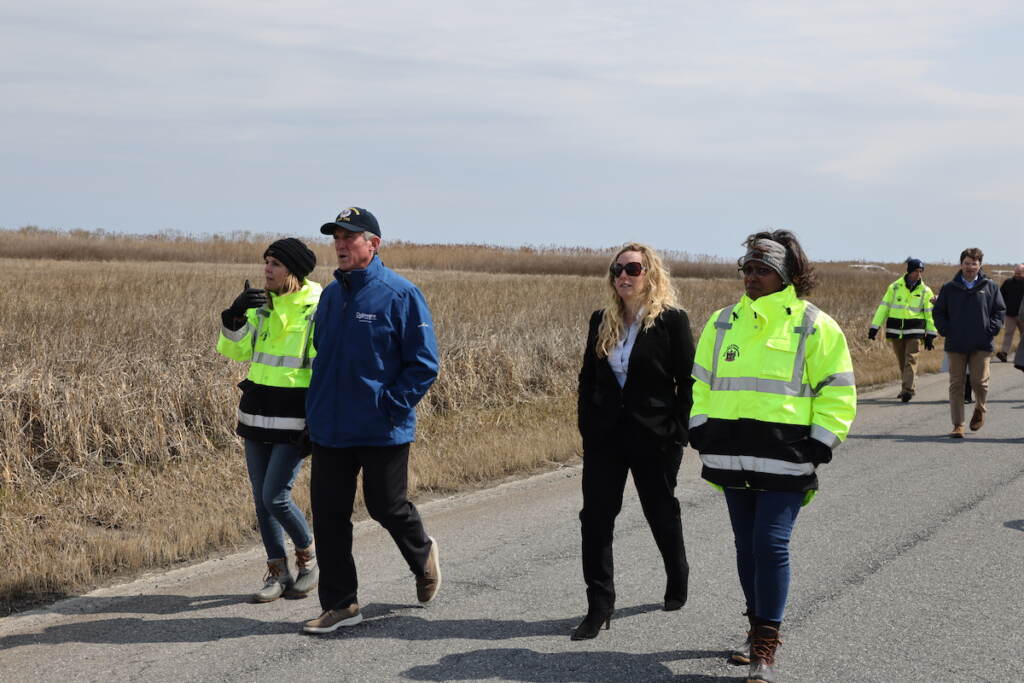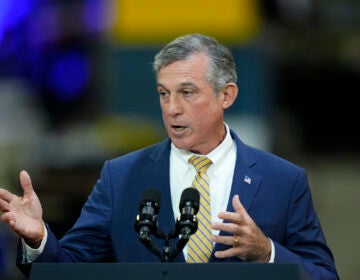Federal dollars to help Delaware ease traffic congestion around Christiana Mall
The $160 million stems from the $1.2 trillion bipartisan infrastructure bill. Part of the funds will help alleviate flooding in low-lying areas such as Bowers Beach.

Traffic jams are a daily hassle on the stretch of Delaware 1 near Christiana Mall (at right on map) but there are plans to widen the roadway and improve exits. (State of Delaware)
An infusion of federal dollars will help Delaware accelerate the planning, design, and eventual construction of some key road projects, including the widening of a major artery to and from Christiana Mall.
The $160 million in grants from the bipartisan infrastructure law will also address threats of climate change to low-lying areas such as the Bowers Beach community near Dover.
The state is readying applications for additional grants available in the $1.2 trillion plan for improvements to roadways from New Castle in northern New Castle County to Laurel in southwestern Sussex County.
Gov. John Carney spoke to the infrastructure projects earlier this week.
“Delawareans will travel easier on major routes and have increased confidence in the roads they need to use every day and in emergencies with the projects,” said Carney, who explained how the roadway to Bowers Beach will be raised up to 5 inches to alleviate flooding that sometimes traps residents. That project is expected to be finished by summer.

The roadway expansion on the 2.5-mile stretch from the popular shopping mall and adjacent Christiana Fashion Center to U.S. 40 will likely take years. But the state Department of Transportation’s C.R. McLeod said more than 70,000 vehicles traverse the highway per day, so expanding it is essential to connect drivers to Middletown and other areas to the south.
The exit at Delaware 273 “has delays almost every day, especially during peak travel times,” McLeod said.
The project, which could cost from $100 to $200 million, was originally slated to start in 2028 at the earliest. While no firm date has been set to start construction, McLeod said the new federal cash will allow it to begin years earlier.
“We’re now going to be able to start moving that planning and design process forward, which will ultimately allow us to move that construction timeline forward,’’ he said. “We know the need is there.”
The money will augment hundreds of millions of dollars the state spends annually to improve and replace roadways.
More than $48 million of the federal funding will assist DelDOT in addressing problems in at-risk coastal areas, McLeod said.
South Bowers Road, for example, is the only one in and out of Bowers Beach. When “it goes underwater, you have people trapped essentially,” McLeod said. “So having these new federal dollars come in are going to allow us to do projects like this one.”
McLeod said another project is being planned along flood-prone Delaware 54 near Fenwick Island, a popular summer beach destination.
“Every new federal dollar helps us to begin addressing these problems,” McLeod said.
U.S. Sen. Tom Carper, the senior member of Delaware’s three-person congressional delegation, agreed. Carper chairs the Senate Environment and Public Works Committee, which drafted and negotiated the legislation.
“We prioritized investments in safety, especially for pedestrians and bicyclists, sustainability, and resilience, all while addressing the backlog of repairs in our nation’s transportation system,” Carper said.
“It’s great to see this historic funding making its way into communities across Delaware, rebuilding the roads that connect us in a way that makes them more resilient in the face of climate change and that allows Delaware to grow our economy at the same time.”
WHYY is your source for fact-based, in-depth journalism and information. As a nonprofit organization, we rely on financial support from readers like you. Please give today.






